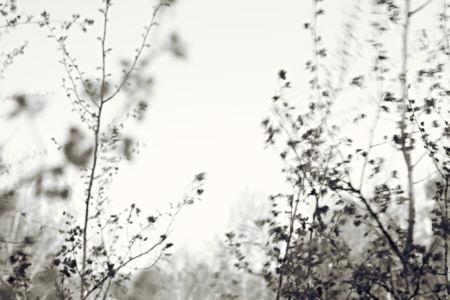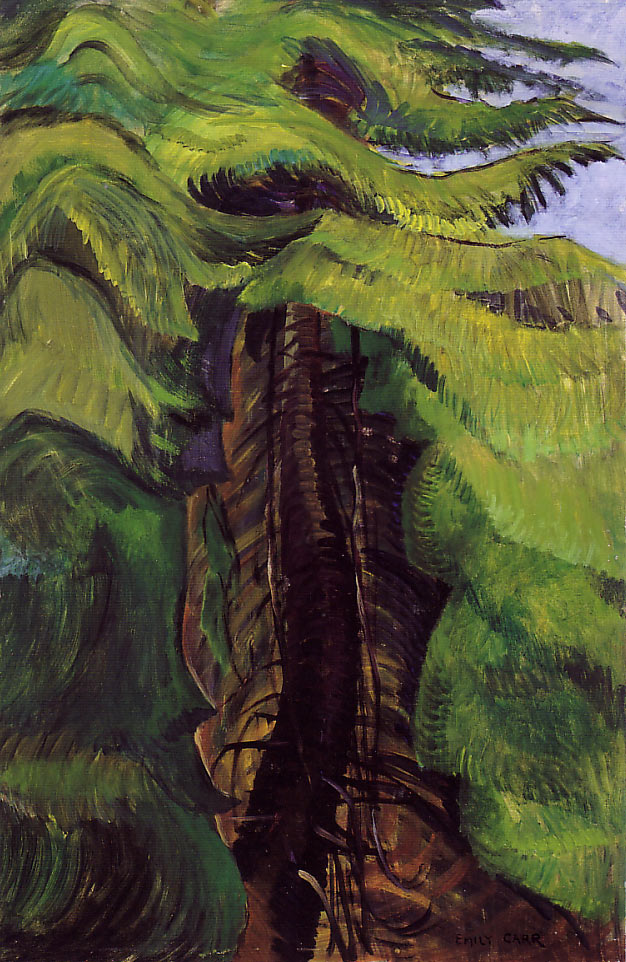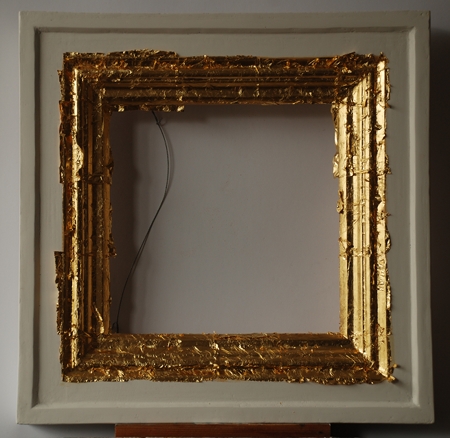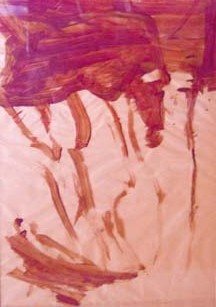Posted by Steve Durbin on March 16th, 2010
In Praise of Trees is the name of my show with printmaker Kerry Corcoran, which opened about a week ago at the Bozeman Public Library. The Atrium Gallery is essentially the combined entrance halls from two sides of the new (environmentally-certified) building, resulting in a broad, L-shaped space intended for exhibitions. It does get lots of traffic, though much of it under 12 years old. We applied and were accepted over a year ago.

more… »
Posted by June Underwood on August 10th, 2009
Some of you already know that I’ve been copying Emily Carr paintings for the last week or so, attempting to understand more fully how she does forests and trees.

Emily Carr, Cedar Sanctuary, 38 x 26″, Oil on paper, 1942
I’ve learned a lot through this exercise [ including the rule that I must paint-over or otherwise destroy the copies I’ve made before someone comes into the studio and exclaims with pleasure over them. Such an exclamation forces me to admit that what the complimenter is seeing is a copy, causing embarassment all round.] Carr’s finding of shapes in the complexity, of making color within the shapes, and of “draping” her branches are all valuable for my own art-making thoughts.
However, during this process, I had other kinds of questions occur.
more… »
Posted by Karl Zipser on March 13th, 2009

Frame in process of being gilded
Gilding is easy, though it requires attention to detail. Gilding is also fun. I gild when I make my own frames. I recently
went into the gilding process in detail on my own site. Not many artists gild or use gold. I sometimes wonder why.
Does gold have a place in modern/contemporary art? Would you use gold if you knew how? Or is gold something of a symbol on being not-modern?
Posted by Karl Zipser on January 18th, 2007

Red gauche on paper
Let’s for a moment accept the proposition that children artists can be considered “real artists.” What an odd type of artist a child makes, if you think about it. What a short career a child has as an artist, always in transition. Who could be worse at writing an artist’s statement than a child?
Please look at the painting above and ask yourself, what does it depict? I have looked at this artwork many times and I always have had more or less the same interpretation of the content. But what was the artist’s intention? Are our views similar? Why don’t I ask the artist? In fact, I am the artist. I painted this sometime during the early 1970’s, but I have no memory of doing so. I have no idea what I intended. I somehow doubt that my interpretation of the picture (which I remember from later in my childhood) is in fact what I was thinking when I painted it.
The painting is framed behind glass, which makes it difficult to photograph. My mother made frames for many of my sister’s and my artworks, without which they would certainly have been lost. Children’s art was the main artwork in our house when I was growing up. If it were not for this early encouragement, I probably would not have become an artist.
Do you frame your children’s art? Do you ever think of the long-term implications of doing so (or not doing so)?
. . .
[Update]
I enjoyed reading the different interpretations of this painting by Sunil, Steve, Rex, Leslie, June, and Birgit. I never had the idea of a giant figure on the right before, but Sunil’s comment made me look at the picture in a different way. An area of agreement is that the picture shows a man. I would really like to know what I thought I was doing when I made this.
I’ve been thinking about this picture a lot, about the role of the “artist.” Here is what I think: my mother’s role in this picture was something like that of a photographer. She didn’t “make” the image by hand, but she created the conditions for it to be made. Presumably it was one of many paintings. She selected this one, framed it and saved it. I think she chose this image for a reason, because it is a compelling. She could also have made a compelling photograph of a pattern of clouds in the sky that looked a lot like a man on a dock or a boat, or what have you. I think my role as a three or four year old painter is completely accidental.
Is children’s art art? It seems to me that it can be, but a parent or some adult has an important role to play in making it art — selecting what is good and presenting it as art.
[UPDATE 2]

Posted by Art and Perception Admin on September 24th, 2006

Painting From Life vs. From Photos

On the question of how to frame pictures for exhibition, Angela Ferreira commented:
I think the best way to exhibit any painting to appeal to a wide variety of buyers is to display it with a very simple effective frame, or leave the canvas unframed. Framing can be distracting and might not appeal to some — most people like buying a painting and then framing it to their own house style.
Of course, a painting only has to appeal to one buyer — the one who takes it home. In this way, a painting is different from a book or a song. Most people know how challenging it is to frame a picture. If the artist does a good job in choosing a frame, this can save the buyer a lot of effort and decision-making.
The right frame can enhance the value of a painting. But the artist takes a risk in framing, as Angela implies. The time and money invested on the frames may not be well spent.
Should artists consider the frame as an integral part of their work and strive to get it right, whatever the risk or complexity? Or is it better to leave framing to the buyer?
[See the poll at the top of this blog, right column]
[See also post on Photostream]
Posted by Art and Perception Admin on September 22nd, 2006

Painting From Life vs. From Photos
It is somewhat rare to show framed pictures on the internet. Perhaps this is because the internet is something of a frame in itself. We are here following Hanneke van Oosterhout’s still-life painting, from the drawing to (hopefully) the gallery-sold work; in real life her work benefits from the real type of frame.

Choosing a good frame is difficult. Compared to painting the painting, choosing the frame is highly constrained by one factor in particular: cost. The ideal frame can raise the market value of a painting, but before an exhibition, one does not know what will sell. Investing in the frame is therefore a sort of speculation. For the painting above, Hanneke felt she made a satisfactory choice. The physical texture of the frame complements that painted in the shells. The frame is made from pre-fabricated profile stock and was not inordinately expensive. In the photo it looks pretty good. But in real life the frame screams, “second rate quality!” The reason for this is simple. The physical texture of the profile stock, prefabricated rather than hand crafted for this frame, does not “mesh” at the corners where the profile was cut and joined together. This subtle aspect is important in real life. It undercuts the value of the frame (and the painting) for the discerning collector. I suppose the really discerning collector would buy the painting and invest in a new frame.

In the work above, the frame is hand-crafted. That is to say, someone did some work decorating the frame after the corners were joined. In the photo, this is not obvious, but in real life, it makes a big difference in the feeling of the frame, its feeling of worth. Of course, this type of frame is somewhat more expensive. But if a painting is good, a certain quality (and expense) of frame is called for, otherwise the frame drags the painting down. A good frame helps, but better no frame than the wrong frame.

The frame depicted above (sorry about the quality of the photo) is made from pre-fabricated stock, the type of frame you can buy at a normal frame-making shop. Although not “hand finished” it does not have a “cheap” feel to it. The reason is clear: the profile “meshes” at the corners, because of its simple form. A handcrafted frame of a similar profile would appear more sophisticated, but the frame above does quite well. Or does it? You comments, as always, are appreciated.
Posted by Karl Zipser on September 22nd, 2006

Certain types of paintings should be framed. Framing poses a challenge for the artist. The choice of frame will have a great impact on the appearance of the work. Yet the painter here must generally make a selection, rather than create the frame him or herself (possible, of course, but an artform in itself and very time-consuming). Hanneke van Oosterhout is struggling with the great frame problem with her still-lifes now. See Follow the Painting.











